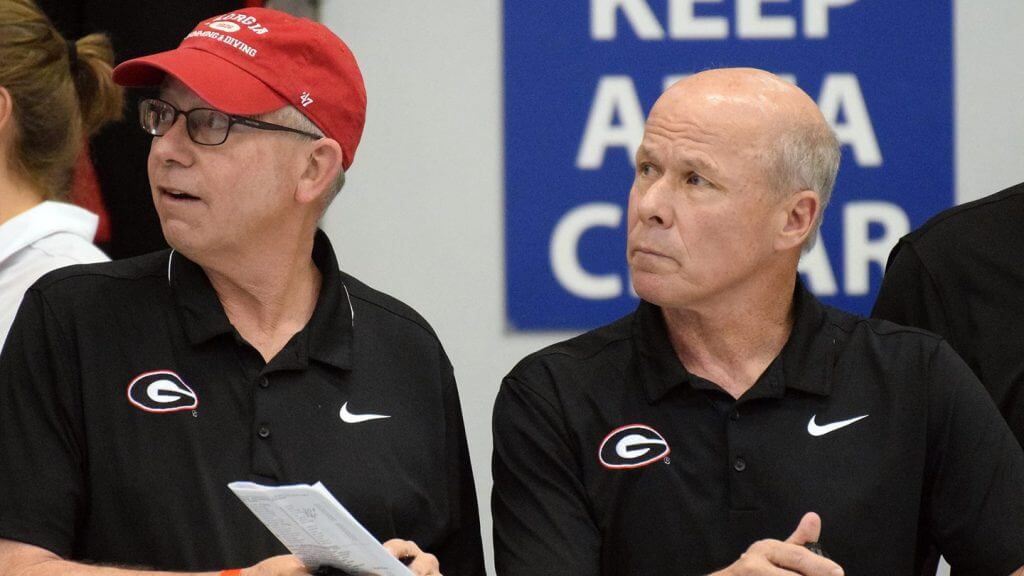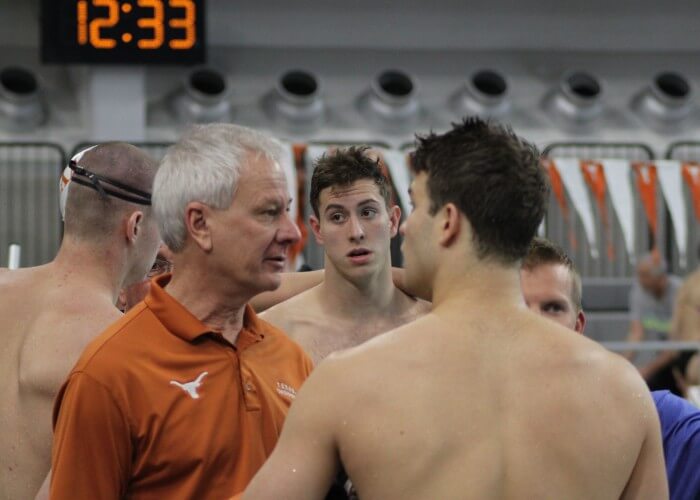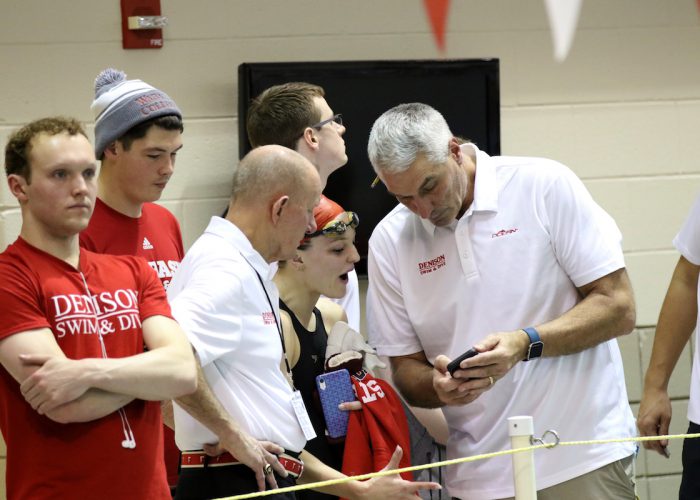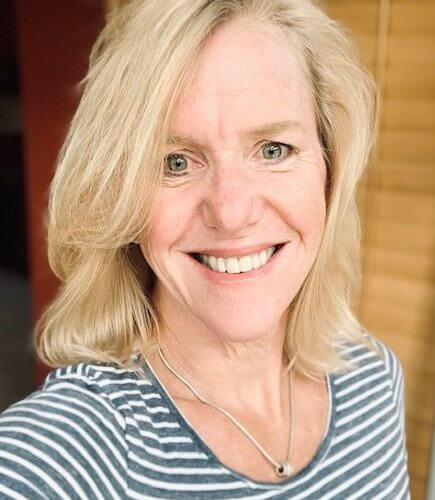The Fine Art Of In-Meet Coaching: It Can Take a Deft Touch…Or a Hammer

The Fine Art Of In-Meet Coaching: It Can Take a Deft Touch…Or a Hammer
You want smoke on the water, excitement in aquatics? Just put longtime coaches in the same room. For starters, invite Jack Bauerle, Don Gambril, Frank Comfort, Bob Boettner or the departed Don Easterling and Ray Bussard. The subject is dual meets. Sit back and watch the fireworks!
“It appears dual meets today aren’t as important as they once were. They were much more important back then,” says Comfort, the University of North Carolina coach from 1977-2006. Former Olympian, Alabama swimmer and head coach Jonty Skinner agrees. Dual meets today don’t “come close to rivaling some we had in the 1970s.” In Burt Kanner’s new book, Don Gambril: A Coach with a Heart, Skinner says: “They were all dog-eat-dog affairs, and we didn’t back down from throwing it down before the meet. That’s not to denigrate today’s contests, but those dual meets resembled armies that clashed in the early centuries. There was a lot of facial and physical intimidation going on in the pool during the warmups, and there was no end of screaming and gesturing across from each other before the battle started.”
“In some ways, swimming is going the way of track and field—invitationals,” laments Comfort. “An enormous amount of time was spent on lineups. I had a book on every team and their swimmers that I was really concerned about. There was strategy and enthusiasm. I loved that part of the game.”
Pre-internet, information on opponents was less accessible, sometimes necessitating in-person scouting of opponents—something Comfort often did…but not to the extent done by one Middle Atlantic high school coach who showed up at a rival’s dual meet, responded to a call for timers and ended up timing swimmers in the fastest lane!

Photo Courtesy: Andy Ringgold/Aringo
“Today there is more information available than we need,” says Bauerle. “Back then, changing lineups in-meet was a constant—less so today.” Often, opponents did not send their meet results (even when asked) to teams in advance. “That meant much of the homework and in-meet flow often fell to the assistants,” says Bauerle’s longtime sidekick, Harvey Humphries. “Joe Hendee (Tennessee), Kris Kubik (Texas), Greg Rhodenbaugh (Arizona) really knew the opposition, followed meet scores and put things together.”
“Much was done long before the meet,” says Comfort. “We had a Plan A and went to Plan B if necessary. You had the opportunity to be frustrated when the opposing coach made a good move.” One Hall of Fame coach—and nemesis—was NC State head man Easterling, a master planner who entered every meet with a Plan C. Unlike today when meet lineups are submitted in advance, in earlier times coaches submitted swimmer names just before a given event. To keep his options open, Easterling prepared three entry cards. “It was a lot more fun that way,” said the curmudgeonly coach.
“Our freaking dual meets were classics,” says Comfort. “I was hired to beat him, and he was hired to beat me. He hated anything that was blue.” So intense was the rivalry, “we thought about each other all the time,” says Comfort. “We got to swim them four times each year, and I remember those meets down to the last detail.”
Bauerle’s squads swam 738 dual meets during his 40-plus-year career at Georgia, compiling a 253-97-2 (.719) men’s and 342-42-2 (.886) women’s mark. His lifetime record in Athens was 595-139-4 (.806).
“Dual meets are fun and toughen teams up,” he says. “Against some opponents, you walked in and you knew you were in a war and had better have your chin straps on. In Dallas, November 1998, we swam against Steve Collins’ SMU squad with Martina Moracova (25-time CSCAA All-American) and Lia Oberstar (19-time). It was close, and every race for fourth and fifth was close. It was one of the best dual meets I’ve ever been a part of. It was fun—everything a dual meet should be. Tense, hard fought. We lost, and it got my girls’ attention. It was the best thing that ever happened to us. It set us on the path to our first NCAA championship the following March.”
LOOSE CANNONS
While some coaches seemed to play their lineups straight-up (Gregg Troy, Frank Busch come to mind), others opted for a more fluid approach. In the 1970s and ’80s, the SEC, ACC and the like were a home to gamesmanship, shenanigans, egos and more. Many a visiting coach to Tuscaloosa shivered with his team in front of open doors guarded only by the wintry outside and the Alabama offensive line. Or in distance events, they watched as home team lap counters counted down rather than up.
Elsewhere, overflowing hostile audiences created a persistent cacophony. Frequently, finish-judges’ cards disagreed with watch times, creating unfair outcomes. And at Tennessee, recalls Humphries, “Bussard would do anything to win.” Chances are your lineup cards would be inspected, graded and occasionally a swimmer disqualified by the host coach for some supposed indiscretion.
Sometimes, even the best of strategists had to resort to underhanded methods—or trickery. In the mid-’80s, Bauerle took his ranked team to face powerful Clemson for a clash of the titans. “A hated rival. There was no love lost. I thought we had a 20 percent chance to win,” he says. “I knew if Coach Boettner had all his best swimmers for the final relay, the Tigers would win.” So inspired, Bauerle sent his best Bulldogs, parkas, goggles and all to the blocks to stretch for the opening medley relay. Ever-alert, Boettner countered with his best. At the last second, the actual Georgia quartet assembled and swam. Come 400 free relay time, Clemson had only two of their four best available, allowing Georgia to win the race and the meet.
In another sleight of hand and short-handed, Easterling used only three swimmers for the 400 free relay against Bill Campbell’s Maryland team. Surreptitiously, his leadoff wore a red cap and then reappeared for the anchor leg wearing a white cap, allowing State to win the race and the meet!
HOW GREAT THOU ART
Self-importance and self-confidence were never in short supply in the earlier days of Gambril, Bussard, Sam Freas, Randy Reese, et al. “There were a lot of egos involved back then. It was an entertaining time,” says Humphries.
“Ray Bussard was the utter master as a meet planner,” says Comfort. “I learned from him. I loved the guy. I’m sure all the people who competed against him would say something similar. His dual meet record was unbelievable (178-20, .899). He knew every aspect of a meet.”
THE LONG VIEW
Regardless of the fun and games in-season, most coaches retained a greater seasonal perspective. “We did not rest for dual meets and sacrifice year-end goals to win dual meets,” says Bauerle. “We kept our eyes on the SEC and NCAA Championships. One of the reasons we didn’t rest was we reasoned that if you swam great when you were tired, you were going to swim great at the end.”

Photo Courtesy: Denison Athletics Communications
Denison’s 10-time NCAA D-III coach of the year Gregg Parini echoes those thoughts: “The decision on how to manage a dual meet always has to be balanced against the long-term season goals for the program, the team and the individuals involved. For us, dual meets serve as preparation for championships and determines how we will approach the meet. Winning a dual meet may be a good thing, but doing so at the expense of advancing a team’s learning curve in preparation for championships may actually impede the team’s development. Understanding how the meet fits into the big picture is critical and informs any decision we may or may not make.
“There have been occasions when winning a particular dual meet was deemed important, and we made adjustments throughout the meet to maximize scoring potential. Such wins can go a long way to developing a team’s/program’s confidence. By contrast, there have been many more occasions when winning the meet wasn’t nearly as important as advancing the team and athlete learning curves. In these situations, we stayed the course, did not make lineup adjustments, and we asked athletes to find a way to succeed. Exposing our athletes to these pressure-packed moments shows confidence in their ability to adjust to the competition so they’re better prepared for the bigger swims that come at championships.
“There are obvious risks associated with both decisions,” Parini adds. “Adjusting a lineup may result in a team win, but it may also rob a developing swimmer of an opportunity to learn how to handle a pressured swim, leaving them less well-equipped at season’s end. Likewise, exposing a developing swimmer to a pressured swim runs the risk of damaging his/her confidence if the swim doesn’t go well. Mitigating these risks comes when the coach helps the athlete frame the win/loss so as to advance them toward their long-term goals.
“Over my career, there are very few dual meets that I actually remember. Then again, I remember pretty much every championship meet I’ve coached. That said, we always play the long game when it comes to managing any particular dual meet,” he says.
HIGH SCHOOL PERSPECTIVES
In recent times, two high schools in Wisconsin have dominated their state championships. In November, the Arrowhead girls bested Brookfield East, 338.5-285.5, for the Division 1 crown after finishing just behind East the three previous years.
“Over the last four years, we have had some great dual, sectional and state meet competitions with Arrowhead,” says Brookfield East coach Michael Rose, the 2022 NFHS girls swimming coach of the year. “Our schools are only about 10 miles apart, and two of Arrowhead’s better swimmers, Campbell Stoll (Texas commit) and Haley Johnson, swim at Elmbrook Swim Club with Maggie Wanezek (Wisconsin), Lucy Thomas (Stanford) and crew. Our teams get along really well and are very supportive of each other even during intense competition.
“Generally, for dual meets,” says Rose, “we pick the matchups we want to see and let the chips fall where they may. Winning is the preference, but not the most important consideration. I look at relay matchups especially because our relays have been so close. For state, we talk about what events will have the best potential to maximize our points, but ultimately, I want the kids to be in the events they most want to swim.
“I have not made changes to relay lineups during the meet because I really want to trust the kids to understand and do what needs to be done. For example, at the 2020 state meet, I chose to keep Abby Wanezek (state record holder in the 50 free) on the 200 medley relay though we were seeded first by quite a bit. Our 200 free relay was seeded fifth. I really believed the kids we had in the 200 free relay could win without Abby and win all three relays. We went 1:38.3 in the medley, making a run at the national record. We also won the 200 free relay and set a record in the 400 free relay. I always want the kids to believe in their abilities, work to build that belief early and maintain it throughout the season.
“I always see dual and conference meets as developmental. Wins are great, but we are looking for experience in those meets and never make them a priority. Recently, we have teamed with Arrowhead and Madison Edgewood (seven state Division 2 titles) for a double dual meet to compete against the best in Wisconsin. It was a great meet this year, but both teams beat us,” says Rose. “To compete against the best athletes in the state is a great opportunity no matter the outcome.”

Ruth Ann Ahnen
Arrowhead’s Ruth Ann Ahnen seconds that emotion. “Mike Rose and I have had a healthy rivalry. For the double dual meets, I went to a great deal of planning and positioning of swimmers versus what I thought Brookfield East would do. I used our dual meet and the tri-meet to test my hypotheses in advance of the state meet.
“Because of the fast-paced nature of high school dual meets and with all the other switches that routinely take place due to illness, etc., switching lineups for points is something I have rarely, if ever, done. Recently, we’ve had the luxury of dual meets not being close in our conference,” says Ahnen. (Note: Arrowhead is in the Class 8 Conference; Brookfield East is in the Greater Metro Conference). “However, in the years when Arrowhead and Waukesha South were ultra-competitive, I would change relays around, but not individual events.” Happily for Ahnen—with her loaded 2022 state championship squad—no last-minute changes were required this past year.
While dual meets may not be quite as important or prevalent as in days of yore, the competitive ones still make the blood boil and the room temperature rise—making for fond memories and hot times.
* * *
Michael J. Stott is an ASCA Level 5 coach, golf and swimming writer. His critically acclaimed coming-of-age golf novel, “Too Much Loft,” is in its second printing, and is available from store.Bookbaby.com, Amazon, B&N and distributors worldwide.



